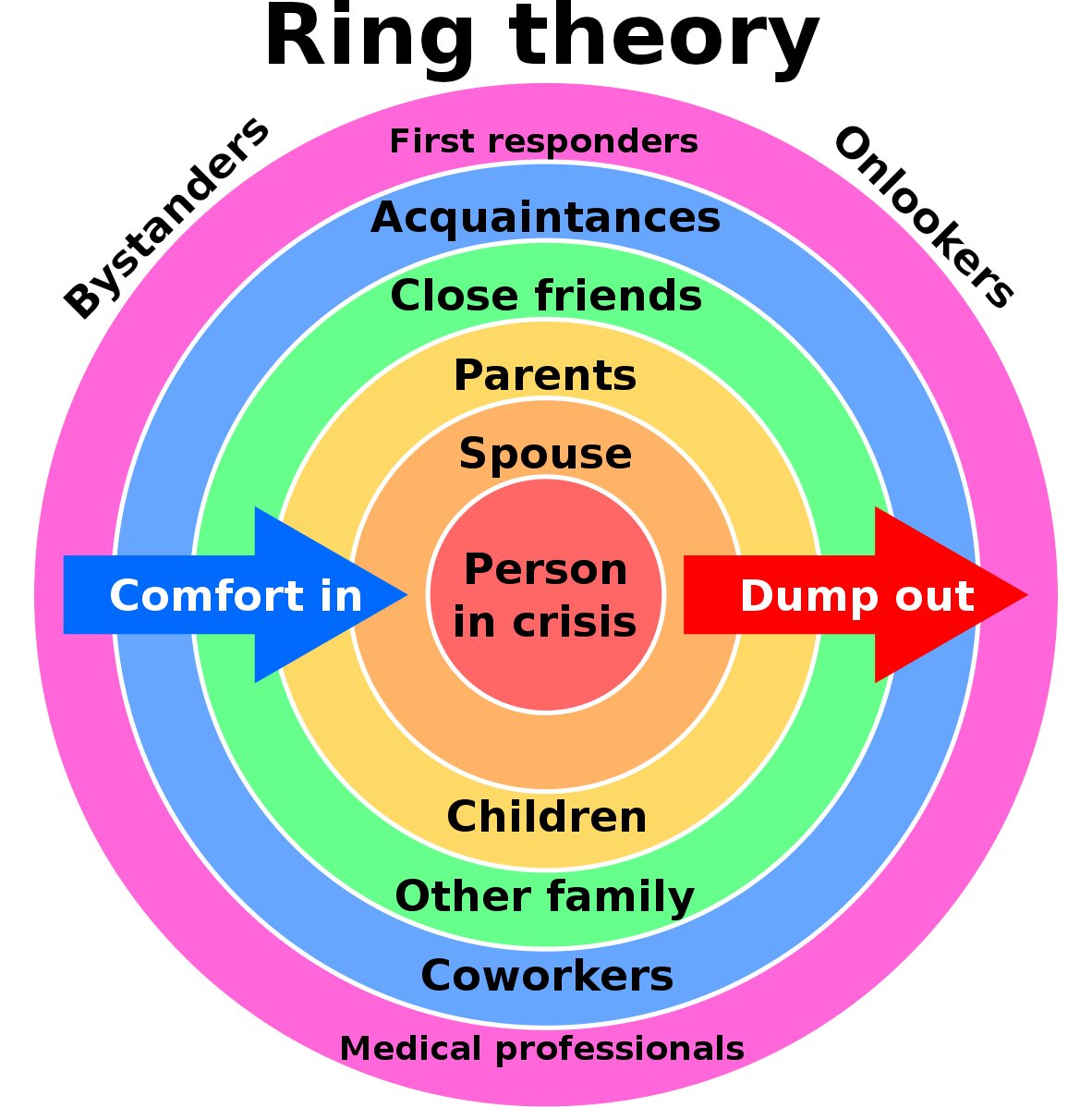Thread by Richard D. Bartlett
- Tweet
- Feb 16, 2023
- #Psychology
Thread
years ago my friend told me about Ring Theory, it helped me to be better at taking care of people in crisis
I've never heard it discussed since then, so I'll write up my understanding here bc I think it could be useful
I've never heard it discussed since then, so I'll write up my understanding here bc I think it could be useful
person X is in distress. they're in the inner circle, surrounded by concentric rings of people. first ring could be their spouse. second ring, siblings or close friends. third ring, acquaintances, friends of friends etc
visualising these rings gives you a model for how to metabolise distress & other intense feelings
the person in Crisis gets to thrash about and vent and dump their bad feelings out to the first ring. no holds barred, anything goes
the person in Crisis gets to thrash about and vent and dump their bad feelings out to the first ring. no holds barred, anything goes
the job of the first ring is to be superhumanly understanding, comforting, forgiving, patient, kind to the person in distress
but they're accumulating resentment / bad feelings in the process, which they can export to the second ring
but they're accumulating resentment / bad feelings in the process, which they can export to the second ring
bad feelings is exported outwards in expanding rings of diminishing intensity
comfort is imported in to the smaller rings in increasing intensity
comfort is imported in to the smaller rings in increasing intensity
if there are enough connections in the social fabric and rough alignment on this import/export model, very intense feelings can be metabolised by the network, like dropping a bowling ball on a trampoline
if there are not enough social connections, or not enough alignment about what to do with bad feelings, the intense distress can overwhelm the network capacity: extreme distress ruptures relatedness
I looked it up, Ring Theory was coined by psychologist Dr. Susan Silk: en.wikipedia.org/wiki/Ring_theory_(psychology)
"Each person in the diagram is advised to 'comfort in, dump out', which Silk calls the 'kvetching order'." 😂😂😂
"Each person in the diagram is advised to 'comfort in, dump out', which Silk calls the 'kvetching order'." 😂😂😂
by the way I think this is a useful way to think about accelerating political polarisation
problem: extreme distress ruptures relatedness
solution: more connections + more skills of mutual care
problem: extreme distress ruptures relatedness
solution: more connections + more skills of mutual care
Mentions
See All
Made in Cosmos @made_in_cosmos
·
Feb 16, 2023
incredible thread, I know I'm going to come back to it often makes me wonder if our concept of "emotional labor" comes from the lack of an extended support system, without it there is no way to further unload the emotional burdens of the person you're helping
